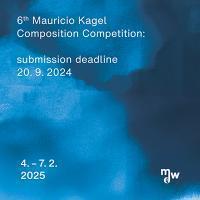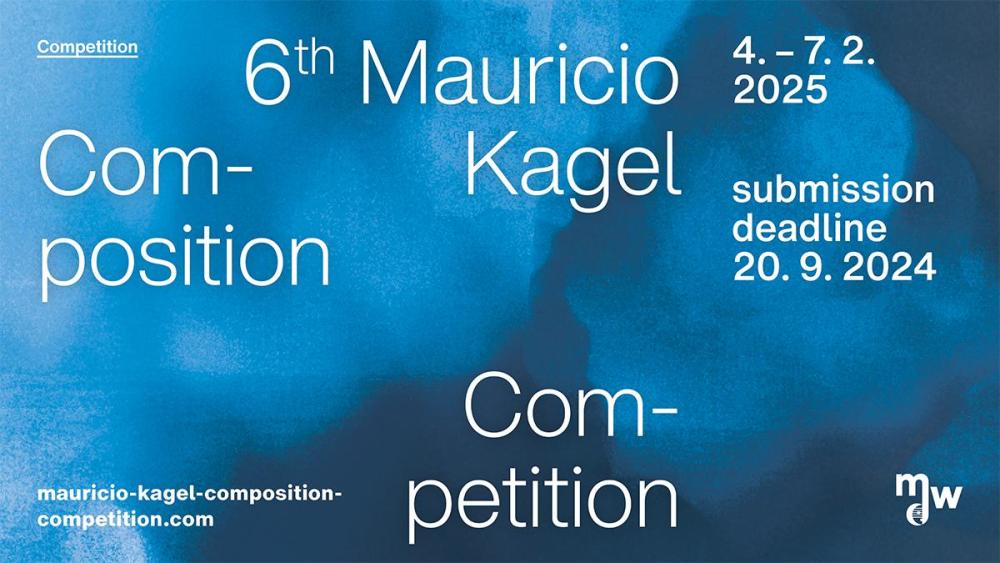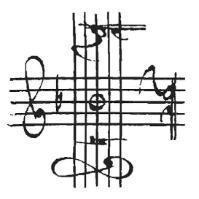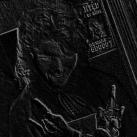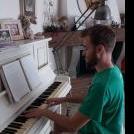Search the Community
Showing results for tags 'piano'.
-
.
-
Hello, I'm new here.. ^^ I am music composer, and would like to share my stuff here with you. (Will update current post sometimes). 😉 Compose with a different genres. So here is the one of my piano track from my album 11th album "Dandelion - Piano Session" Thanks for listen, if ever.
- 3 replies
-
- 1
-

-
- game
- electronic
-
(and 13 more)
Tagged with:
-
Hi, "Piano Miniature" is a composition of mine that I wrote some years ago. George N. Gianopoulos was kind enough to publish it on his Youtube channel. I hope you like it and would be thankful for any thoughts.
-
The 6th International Mauricio Kagel Composition Competition launches its call for entries For the 6th time, the Ludwig van Beethoven Department of Piano in Music Education at the mdw - University of Music and Performing Arts Vienna is inviting to the Mauricio Kagel Composition Competition. In the previous five editions, young composers from over 65 countries submitted around 960 compositions. Since its first edition in 2010, the competition has been committed to promoting contemporary piano literature for children and young people. The task is to write a piano work in a contemporary tonal language that is easily realizable for piano lessons and thus provides young players with adequate artistic access to the music of the present. The Mauricio Kagel Composition Competition is distinguished by its particularly transparent and fair selection process. From the multitude of submissions, a selection of anonymized pieces will be presented in a multi-day judging process by students from the Ludwig van Beethoven Department of the mdw and will be publicly discussed by a renowned, international jury. The upcoming edition gladly welcomes Michael Jarrell, Elena Mendoza, Isabel Mundry, Miroslav Srnka and Marco Stroppa as jury members. The competition prizes are €6,500, €4,500 and €3,500. The award-winning pieces will be published in cooperation with Universal Edition. Audio recordings of these works will also be published on the mdw media library. Composers up to the age of 40 are invited to submit pieces digitally. The deadline for submissions is 20 September 2024. The performances, the public judging process and the decision will take place from 4-7 February 2025 in English in the Fanny Hensel Hall of the mdw and online via live stream. Information about the modalities and procedure of the competition as well as the possibility of submitting can be found at: https://mauricio-kagel-composition-competition.com/ A video of the live stream of the last public final in February 2022 can be found at: https://mediathek.mdw.ac.at/mauriciokagel2022. 6th International Mauricio Kagel Composition Competition Submission period: 20 September 2023 to 20 September 2024 Finale & judging process: 4-7 February 2025 Endowment: €6,500, €4,500 and €3,500 as well as the publication of the work in cooperation with Universal Edition Submission: https://mauricio-kagel-composition-competition.com/ Contact for questions and press mauricio-kagel-kompositionswettbewerb@mdw.ac.at
-
- compositions competition
- composition award
- (and 5 more)
-
Hi everyone! I've decided to post another old work here. The Piano Sonata no.2 in A-flat major (2015) is composed right after the completion of the first Piano Sonata in A major, Pastoral. It's a work in five movements and I will say it's the quickest composition ever for me since I finish the 1st draft of the first three movements within a week and the whole piece within three weeks. For me this is a free flowing one after the strictly cohesive first Piano Sonata, and honestly I love this one more since it displays more real emotions here. The style overall is still very Beethovanian and I am sorry Vince! I choose to post the 2nd movement first because I am really happy to make a fairly good recording in 18th February and I really want to post this even without having a good recording for the 1st movement first. For me this Sonata is not that motivically cohesive as my other pieces is, so the order is not really too crucial here. The 2nd movement itself acts as a counterpart to the serene and motivational first movement with its fiery denial power to the beauty of the previous movement (you will get it when I post the first movement!). I take the inspiration from the finale of Chopin's 2nd Piano Sonata since I am always fascinated by how Chopin wrote with two unison lines and produced such excitement and fury. I also use Sonata form for this diminutive movement as I want to experiment using it within a small time span as in Chopin's movement: 00:00 (b.1) 1st Subject, Exposition, in c minor 00:16 (b. 21) 2nd Subject, Exposition, in f minor 00:27 (b.35) Development 00:47 (b.61) 1st Subject, Recapitulation, in c minor 00:54 (b.70) 2nd Subject, Recapitulation, in c minor 01:11 (b.93): Coda, based on the motive in the first movement (yet to be posted). That D flat minor surprise, muahaha, is to prepare the Fourth movement which is in C sharp minor, my favourite movement of the piece. I also take much inspiration from the first movement of Beethoven's op.111 since it's one of my favourite Beethoven Piano Sonata. I even quote exactly in b.85! (From b.25 of that movement) The overall planning of the movements will be disclosed after the completion of this post, and I will keep practicing those movements (as well as the movements of the First Piano Sonata), so stay tuned! Here is the pdf score and the mp3: Piano Sonata no.2 Second mov.pdf Piano Sonata no.2 2nd mov.mp3 Here is the youtube video if you are interested! P.S Thanks Vince for suggesting me to upload the movement first! P.P.S my favourite recording of Beethoven's op.111 is by Igor Levit since he's a god especially playing late Beethoven sonatas: Hope you enjoy the music and the day!! Henry
-
I am transcribing a piano "sketch" that I wrote out - it will eventually be used as the harp part of a flute and harp piece I am writing. I am mainly struggling with getting some of the inner voice movements and the turnaround figure written out accurately. The progression is pretty simple, it's just: I-iii7-IV-iv-I-viio7/ii-V7/V-V-I (4-3) It would be greatly appreciated if I could get some guidance/help - I already have most of it written, it's just those two sections that are stumping me. * I also switch the viio7/ii for a V7/ii the second time through.
- 5 replies
-
- piano
- transcription
-
(and 1 more)
Tagged with:
-
I did this composition as the final exercise in the Coursera "Compose like Mozart" course.
-
.
-
Here you have my last composition. I crafted both preludes without the use of a piano or any other tool. Only pen, paper and my harmony knowledge were used. I challenged myself to do it this way because they are dedicated to a friend of mine who is a colorblind artist, and that reminded me of Beethoven. Both preludes use the harmonic minor tetrachord between the V and I degrees. I also make a heavy use of augmented sixths and phrygian inflections. It is probably my best composition when it comes to quality/length ratio. And it shows where my harmonic tonal limit is without the help of a piano. I hope all of you enjoy these creepy miniatures. 🙂
- 6 replies
-
- 2
-

-
- colorblind
- piano
-
(and 2 more)
Tagged with:
-
.
-
.
-
Up until recently I was in the process of making music for a short film. The film was about a girl who gains "superpowers" from an old tree, and with these superpowers she's able to save her dying father and the forest. When i sent them my music they immediately said that they hade chose to pursue other options with the motivation being the music was too different from what they had in mind. I'd love to receive some basic feedback on this short piece. I'd like to know wether if it's straight scraggy or if it's alright, if there's something missing and what that could be. I'll be glad for any opinion on my work. I have some confidence in my ability to create music, but since I'm working by myself I never really have any idea what others think, so just a couple of words of opinion would make my day. Thanks 😊
- 3 replies
-
- percussion
- strings
- (and 4 more)
-
Hi again, ladies and gentlemen. After some time thinking about what to post I thought that instead of uploading another nocturne I might ask you for feedback on my most recent video instead. The piece it contains is not very recent, more or less a year old. It's precisely the piece that preceded my first accordion sonata and my first piano sonata. I won't say much about it. It's my third piano waltz, it's playable, and it's hopefully decent. But you judge! • Here is the PDF & MP3: Free sheet music : Rodríguez, Daniel-Omicrón - Obra Menor Nº40 - Vals Ahorcado (Piano solo) (free-scores.com) • Since now free-scores possibly requires registration, for those of you who don't want to go under that process, you'll be able to find the PDF here in the post (but I do recommend registrating though, it's a great site full of hidden gems like YC): 40 - Vals ahorcado.pdf Here's the youtube video created via Piano VFX, OpenShot and Paint.NET: As always, I'm open to any feedback, comment, impression, thought regarding the piece (though it's a bit old but I may always consider your thoughts for my next pieces) the video, a part of it, both, or whatever 🙂. See you in the forums!! Daniel–Ømicrón.
- 8 replies
-
- 2
-

-
- piano
- omicronrg9
-
(and 1 more)
Tagged with:
-
.
-
.
-
.
-
.
-
Yes the title is parenthesis. It intends to present something unspeakable and speechless. I had other intentions at first but do not dare to speak it out. The piece is composed 10 years ago when I was a naive teen. The structure is simpler in a ternary structure. The recording is also recorded 2012 by myself in my school’s music room. You can hear the school alarm sound at the near end!! It’s also full of slips and wrong notes. But I cannot find or produce a better recording. This recording is so honest and pure. Even now I can play it much better in terms of technique, I can never produce that honesty anymore, so I will just retain it here. Without @Omicronrg9’s encouragement, I would not post the piece, thank you Daniel! Hope you enjoy the piece, and I welcome commentaries and comments on it. Thank you and have a nice day! P.S. I have provided the YT link here in case some one loves to visit my channel!
-
.
-
.
-
Hi, I've been workin on this fugue, trying to apply my new knowledge. It's in G major, and there's controversy. In the subject the dominant note (D) appears quite clearly in measure 3. Is it supposed to be transposed tonally, i.e. a fourth up (G) instead of a fifth (A)? I didn't. As you can see in bar 8 it is as an A. It really is an ambiguous case "by the book". Since the D appears prominently but already in the third bar. So I tried to make the answer as you can see, and as it sounded good it stayed that way. The structure is: Exposition, where the 4 voices enter and the countersubject is written in invertible counterpoint. Divertimento, sequence or episode (measure 22) that modulates to the dominant (D). Counter-exposition (measure 26), using inverted subject and countersubject. Divertimento (m. 36) using Corelli's Leapfrog with the subject motive with other schemata and Cudworth cadence (which I like to use a lot). Stretti (m. 44) and mini-exposition with pedal note. Divertimento (m.58) in the subdominant area with plagal cadence and new Cudworth to return to the tonic. Coda (m 65) with perfect authentic cadence. As always happens to me, I'm sure I've missed parallels all over the place. But hey, someday I'll get closer....
-
Hi Everyone, here's a piano piece I composed about walking in the woods. Let me know what you think. Thanks!


